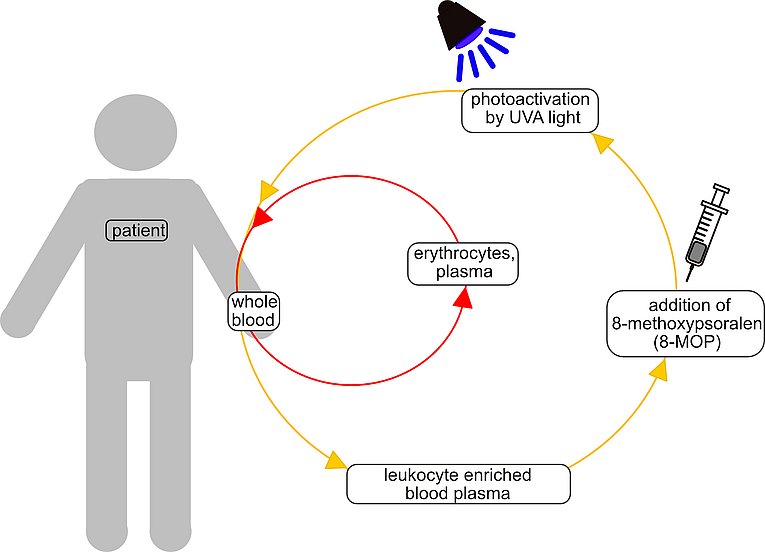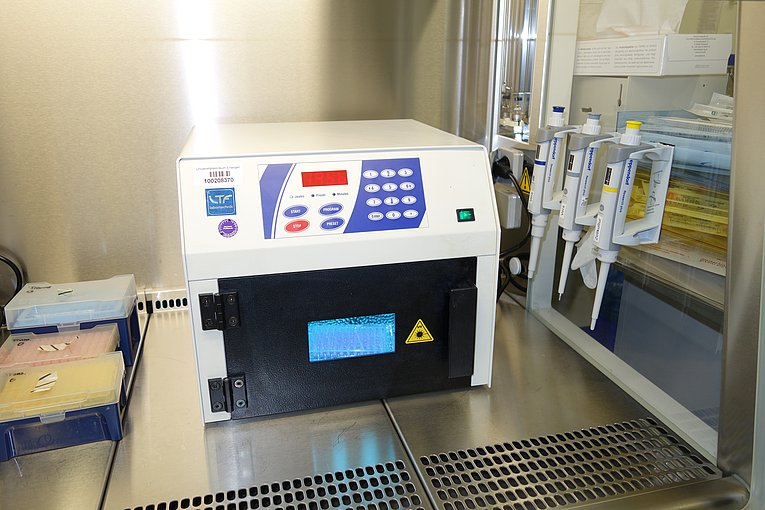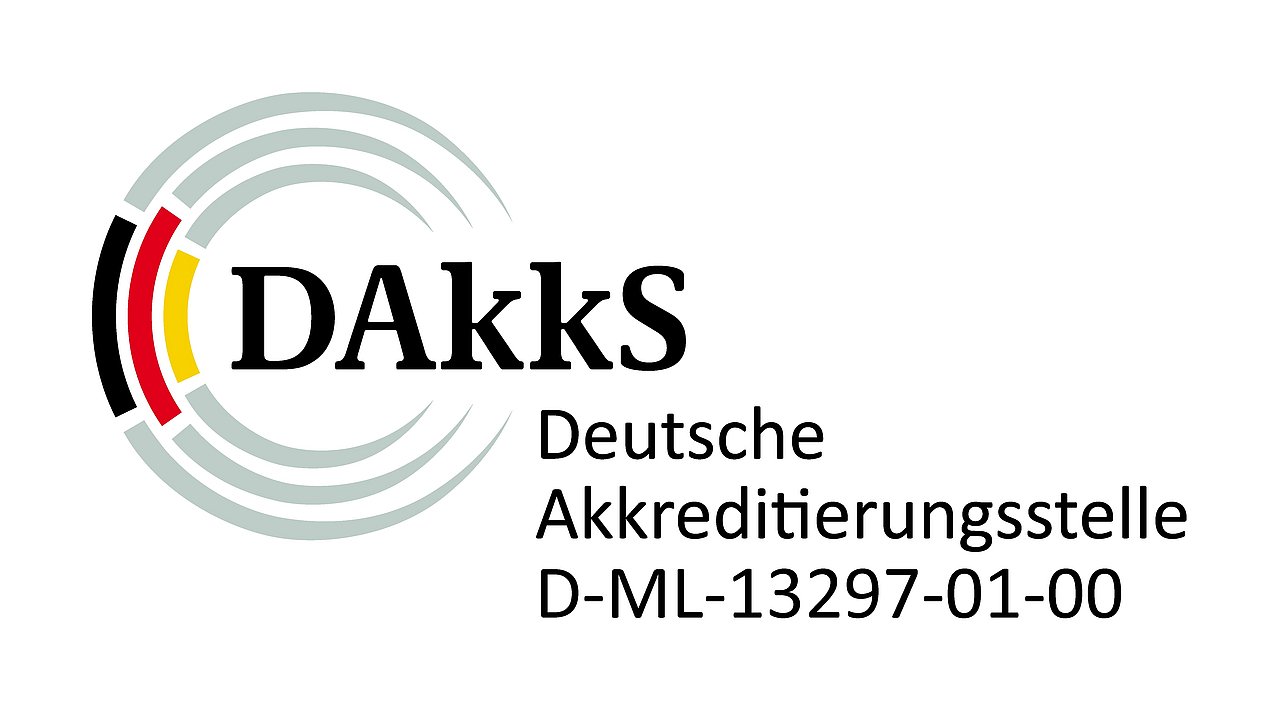Extracorporeal photopheresis
Extracorporeal photopheresis (ECP) is a cell-based immune therapy with minimal side effects for the treatment of cutaneous T cell lymphoma (CTCL), allograft rejection after solid organ transplantation as well as graft-versus-host disease (GvHD) following bone marrow transplantation. For this purpose, immune cells of the patient are enriched by apheresis. A photosensitizer, 8-methoxypsoralen (8-MOP), is added to the immune cells ex vivo before they are irradiated with ultraviolet A light. This treatment induces cytotoxic effects in immune cells. After this procedure, the treated leukocytes as well as the other blood components are reinfused into the patient, where the irradiated cells mediate an immunomodulatory effect on the non-treated immune system.
A unique characteristic of ECP is, that it can induce opposing immunomodulatory effects depending on the disease it is used for. Treating GvHD or transplant rejection ECP mediates immune tolerance, whereas an anti-tumor immune response is induced in CTCL patients. Another advantage of ECP is, that its immunomodulation – in contrast to other immunosuppressive therapies – is antigen specific, hence the immune response to pathogens is not compromised. Considering these characteristics and advantages, ECP treatment has been successfully used for decades, although the underlying immunological mechanism of action is still vaguely known and needs to be elucidated.






